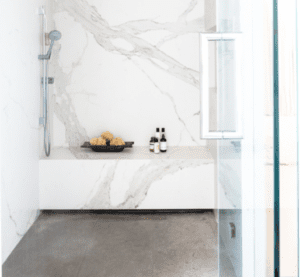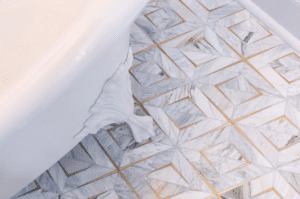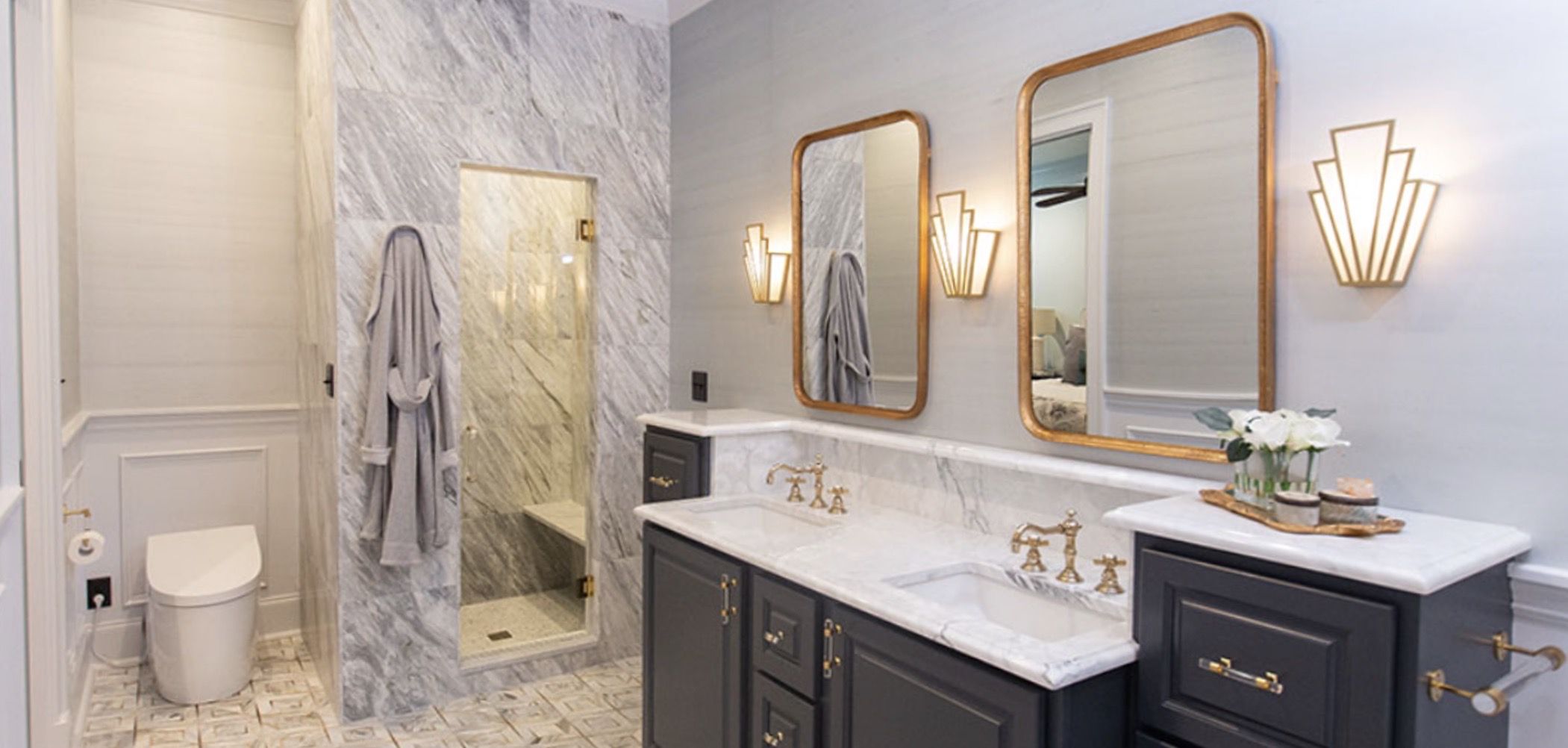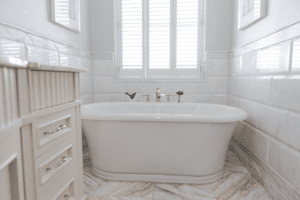Expert tips for mastering marble in your home
“Marble has been used throughout centuries for its luxurious look and feel, and for the beauty and range of colors and variation,” says Jorge Sandoval, showroom manager of Stafford Tile & Stone. However, the use of the stone—one of the oldest metamorphic varieties on the market—has changed drastically since its first uses in temples, sculptures and pillars in ancient Rome and Greece.
“Nowadays,” says Sandoval, “marble is usually suitable for all interior residential applications.” This can include anything from interior and shower walls to counters and flooring.
Since marble is a metamorphic stone resulting from limestone being pressurized over a long period of time, the patina—a change in color due to oxidation over time—and color range of each stone is the result of millions of years of geological change and mineral composition. “The resulting variation is what defines the unsurpassed beauty of natural stone,” says Sandoval.
Marble tile also comes in a multitude of finishes, whether polished, honed or tumbled. Polished marble is smoothed, shined and coated to reflect light and keep things bright (it’s the most traditional and is less susceptible to stains), whereas honed marble has a more matte finish and is more resistant to scratches.

“The tumbled finish gives you a more worn patina and is a more casual look,” Sandoval says. “I usually like the use of a polished finish on vertical surfaces, and a honed or brushed finish for flooring.”
He adds that most quality marble suppliers have guidelines for approved installation areas and can help you choose the best type and finish of marble that you’re looking for.
“There are also different types of marble, and some are definitely more suited for a wet application—such as a shower or bath—than others,” he says.
Once you’ve determined your preferred type of marble and its finish, it’s time to install it.
“Two of the most important things to remember when using marble tile in an application is to ‘blend and seal,” says Sandoval, who emphasizes the importance of letting it “dry-lay” first, which is simply laying down each piece of marble to see where it fits in your project. “Make sure you are present when your installer dry-lays the tile so you can approve the blending before it is installed.”
 After blending, it’s time to seal. Sandoval says that the No. 1 concern he hears from clients is that the marble will stain. “If you seal your marble surface properly, you will help prevent stains from absorbing into the marble, making them easy to clean up.” He also emphasizes the importance of re-sealing your marble in accordance to how much you clean it. The more you clean it, the more often it needs to be resealed.
After blending, it’s time to seal. Sandoval says that the No. 1 concern he hears from clients is that the marble will stain. “If you seal your marble surface properly, you will help prevent stains from absorbing into the marble, making them easy to clean up.” He also emphasizes the importance of re-sealing your marble in accordance to how much you clean it. The more you clean it, the more often it needs to be resealed.
For a surface like a backsplash, he recommends resealing it once every two years. For an area that gets wet more often, such as a shower or bath, he recommends resealing the marble every year. “This should maintain your tile, and keep it looking great for many years to come.”
For more on Stafford Tile & Stone, visit staffordtile.com.













